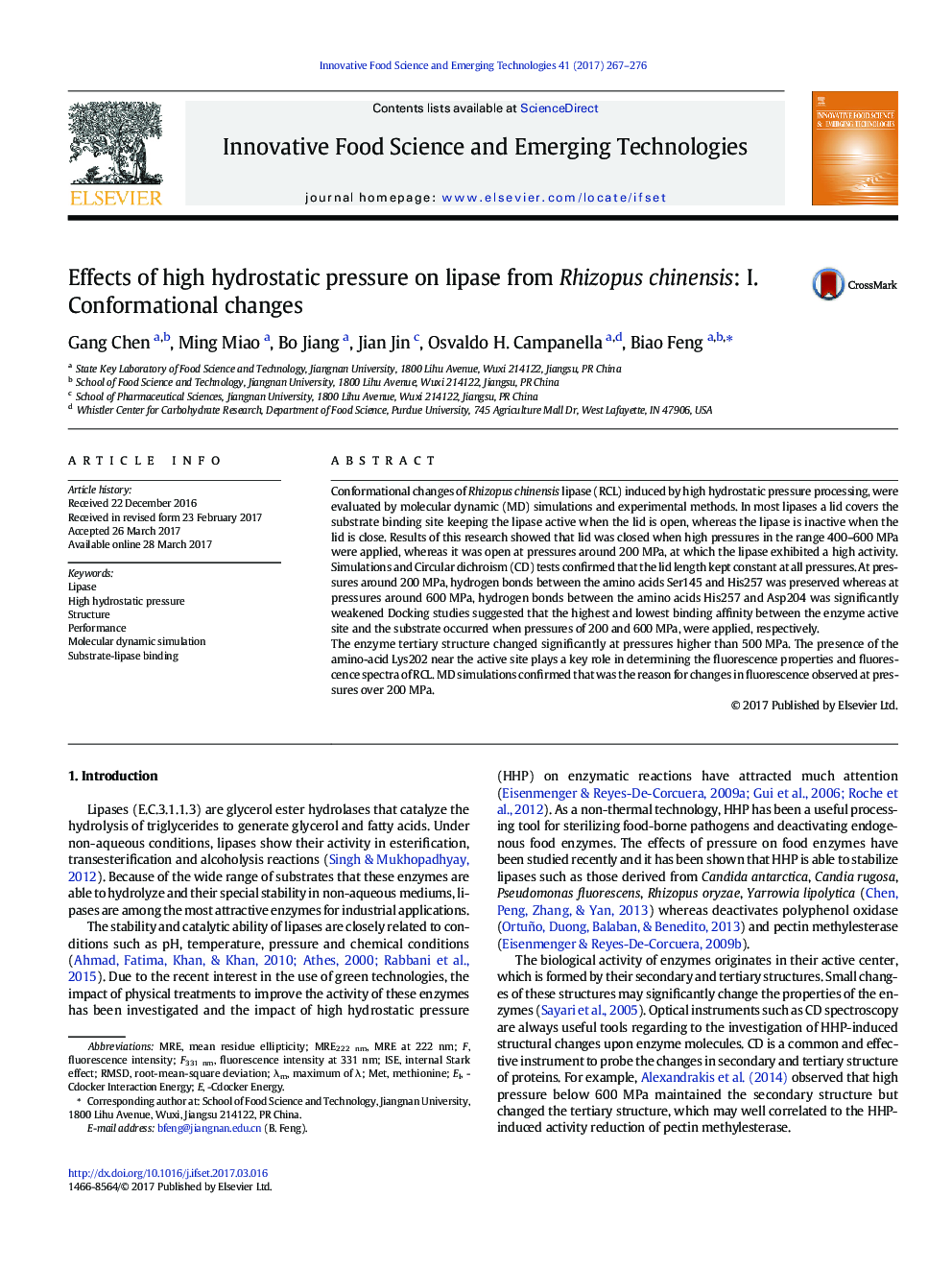| کد مقاله | کد نشریه | سال انتشار | مقاله انگلیسی | نسخه تمام متن |
|---|---|---|---|---|
| 5521768 | 1545527 | 2017 | 10 صفحه PDF | دانلود رایگان |

- A framework to evaluate the influence of food processing on lipase was established using molecular modeling concept.
- A combination of the experiment and the simulation to investigate the structure-function relationship of enzyme was attempted.
- This work can help in evaluation of process parameters (like pressure) to modulate the protein functional properties.
Conformational changes of Rhizopus chinensis lipase (RCL) induced by high hydrostatic pressure processing, were evaluated by molecular dynamic (MD) simulations and experimental methods. In most lipases a lid covers the substrate binding site keeping the lipase active when the lid is open, whereas the lipase is inactive when the lid is close. Results of this research showed that lid was closed when high pressures in the range 400-600Â MPa were applied, whereas it was open at pressures around 200Â MPa, at which the lipase exhibited a high activity. Simulations and Circular dichroism (CD) tests confirmed that the lid length kept constant at all pressures. At pressures around 200Â MPa, hydrogen bonds between the amino acids Ser145 and His257 was preserved whereas at pressures around 600Â MPa, hydrogen bonds between the amino acids His257 and Asp204 was significantly weakened Docking studies suggested that the highest and lowest binding affinity between the enzyme active site and the substrate occurred when pressures of 200 and 600Â MPa, were applied, respectively.The enzyme tertiary structure changed significantly at pressures higher than 500Â MPa. The presence of the amino-acid Lys202 near the active site plays a key role in determining the fluorescence properties and fluorescence spectra of RCL. MD simulations confirmed that was the reason for changes in fluorescence observed at pressures over 200Â MPa.
Journal: Innovative Food Science & Emerging Technologies - Volume 41, June 2017, Pages 267-276